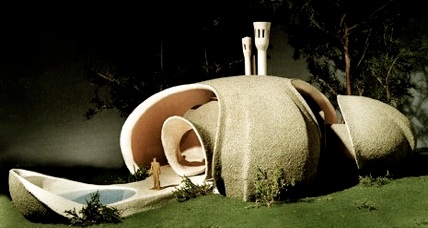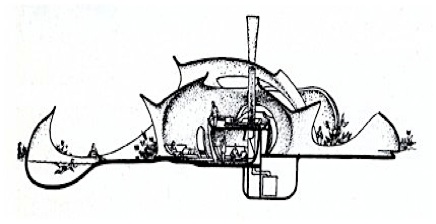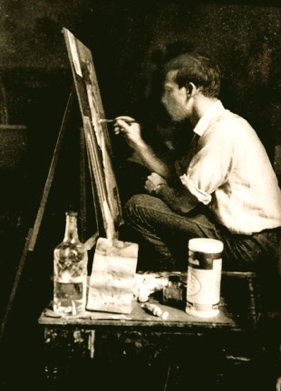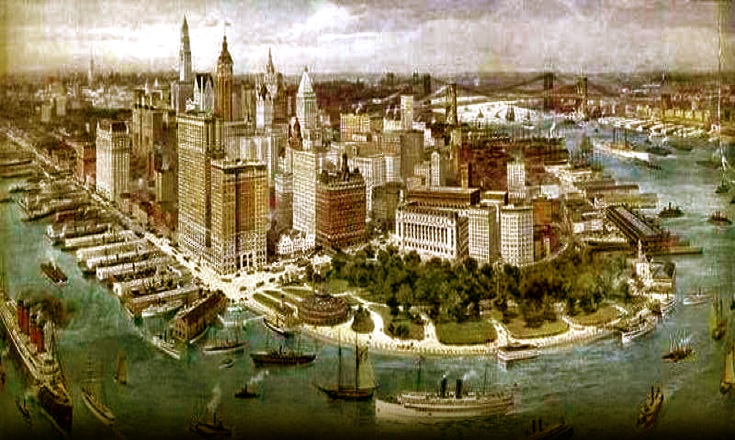“ My spray concrete house was engineered by Salvatore. It was not built but it was much closer to a solution for human life, and had a discipline about it. That's very important: it's not just a sweetheart form - the folds and the edges were each engineered rather than just a sculpture. ...This excursion into biomorphic design was for me an emotional indulgence and continues to influence my work - even as a basis for some of the more conventional-looking projects.” - John M Johansen



“The modernist movement was for us students at Harvard a fierce and joyous experience.... Most of the first generation modern architects, “the giants”, passed through our school. I am greatly proud to be of an age that I could, and did, talk numerous times with each of them... Frank Lloyd Wright, whenever passing through Harvard, excluded all faculty from his lecture and urged us to leave Harvard immediately before we were completely corrupted.” - John M Johansen
-
John M Johansen 1937 Click to open Childhood

DESIGN FROM THE BOTTOM UP
“I've always had a very broad view of things. My parents were both portrait painters of international renown, and so I started as a painter. Then I started to build things with my hands. The relationship between pure art and construction was thus my background. Bauhaus was very strong in its emphasis on building technologies. 'Minimal effort to produce a maximum result' - this principle really caught me.
I believe that the ultimate expression that we are presented with in the finished work of architecture has to be a stunning result, but it has to be derived only through a very serious investigation of the needs and purpose of the building and the structure of the building. To say that in another way, architecture is a service art. If it doesn't serve then it's not architecture. Ipso facto, it is structure. It has to be so, and my position is based on that.
I believe in design from the bottom up. I believe in taking seriously the [program], the requirements, the budget and the site conditions, and out of that I have the confidence that I can bring out something beautiful. This is opposed to architects - and I won't mention names to you, but they'll be obvious - who design from the top down. They start with a precious image and from there they somehow expect it to be built. This is shocking to me.” - John M Johansen, from interview with Hans Ulrich Obrist 2003
As a student in architecture at Harvard’s Graduate School of Design, Johansen was greatly influenced by Bauhaus leader Walter Gropius, along with Mies van der Rohe, Le Corbusier, Josef Albers and Marcel Breuer ( left to right).
In 1942 John M Johansen received his Masters of Architecture degree.
AMONG THE MASTERS
Johansen attended Harvard, was Captain of the Harvard Soccer Team, and graduated cum laude in 1939 in the company of many future “greats” in the fields of architecture, art, design, engineering and politics, including IM Pei, Paul Rudolph, Philip Johnson and John F Kennedy (seen here in their younger days, left to right).

ENTERING THE SEASONS
Beginning with the first of five “seasons”, the film opens in New York in 1916. As World War I rages in Europe., New Yorkers immerse themselves in the “new” arts, women’s rights and debates about labor unions...
Born into a family of internationally acclaimed portrait painters whose clients included society leaders and distinguished heads of state, John M Johansen’s early childhood was focused primarily on the development of his creativity. “...we shared a strong and devoted family life. By their mutual agreement my parents gave us no instruction in painting. Independent search and originality was expected of us, and the quiet, assuring, but never overbearing, presence of their personalities and creative powers is still within me.”
Johansen attended the progressive John Dewey School and was given the freedom to explore many different forms of artistic expression. At age 10 it was discovered that he could not read. After a change in schools and heart-wrenching struggles with reading (a lifelong challenge), he began to excel in his academics.
“Like so many future architects, my childhood make-believe life was enacted within spaces and enclosures. Tree houses with retractable ladders, caves and tunnels in earth, igloos of snow, packing box houses, bridges, walls, framed many of my young experiences. They are still vividly memorable to me and, in fact, variously incorporated into the building designs of my adult years. Is this the child as latent architect? Or the architect as eternal child? ”
- Architect, Artist, Music Composer, Author, Visionary Designer John M Johansen
ANCIENT - FUTURE
Inspired by the power of ancient structures and fascinated by emerging technologies, Johansen began to incorporate symbolism and new building materials into his architecture. The circle influenced his creation of the Spray House (below). Designed to be built with the development of thin-shelled sprayed concrete, it was was exhibited at the 1956 International World’s Fair in Yugoslavia.












